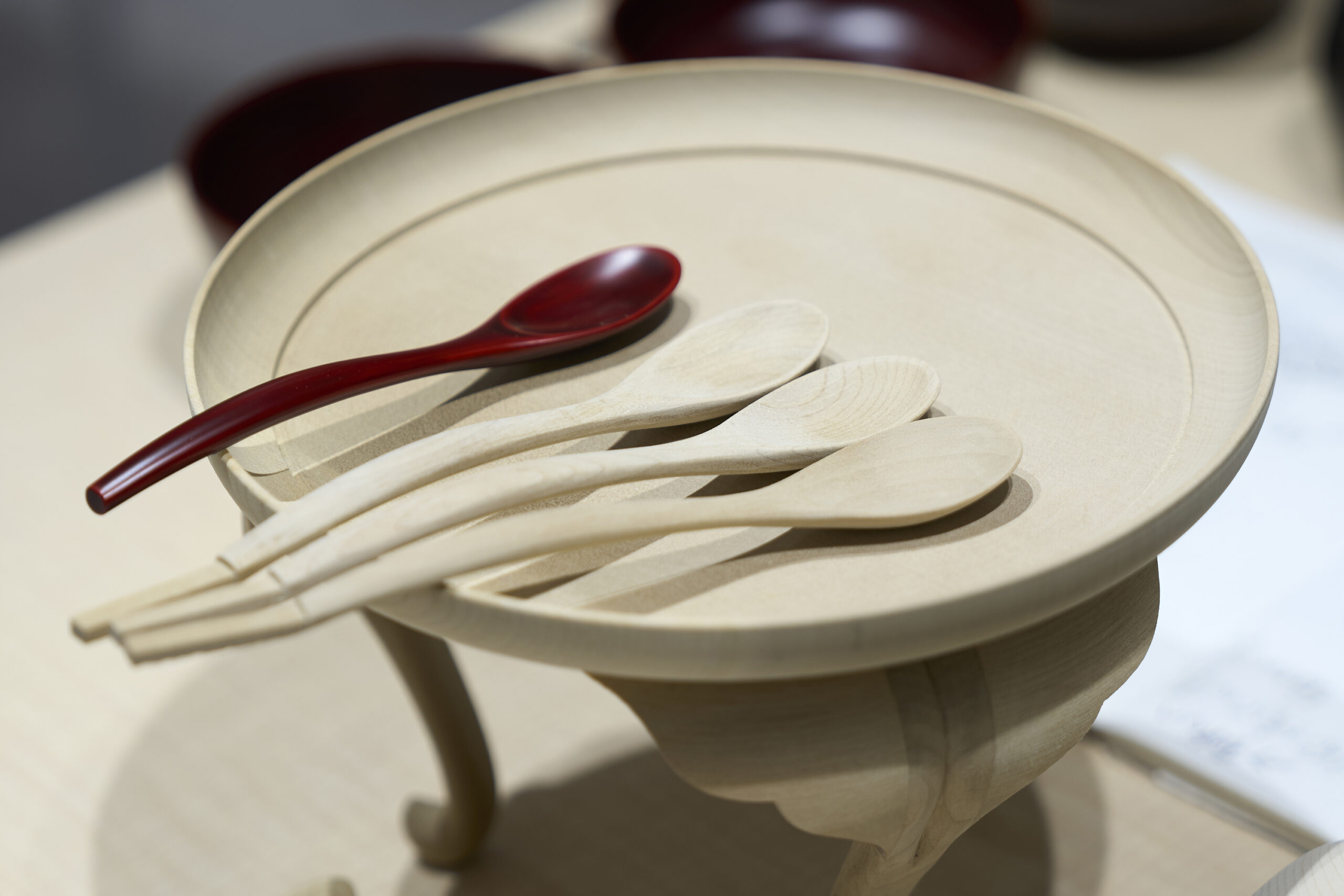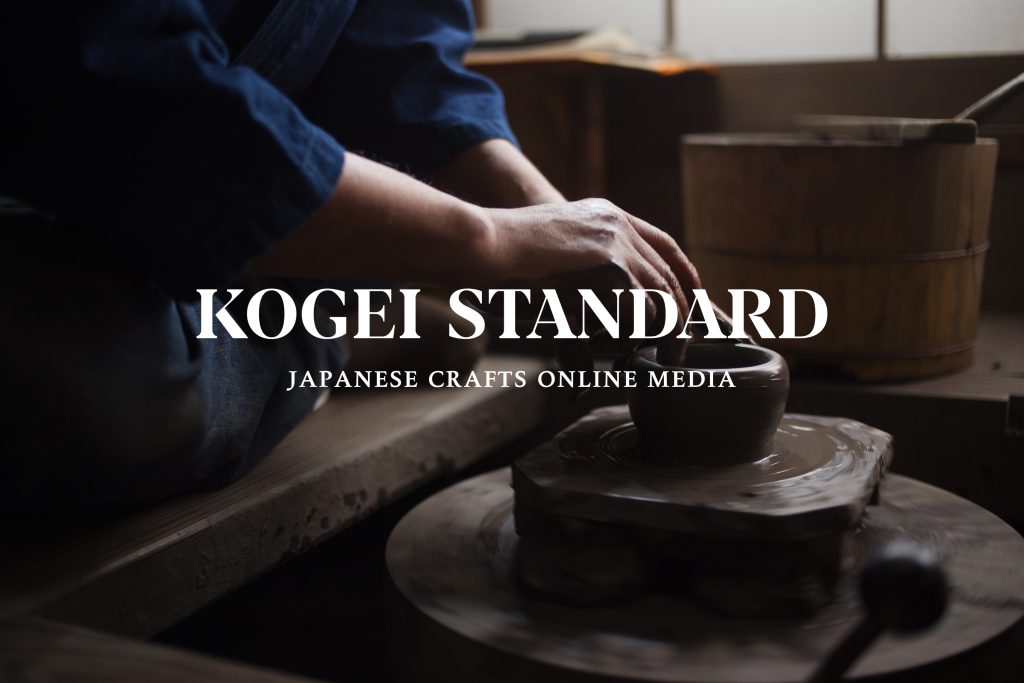There are moments in life when we suddenly feel the essence of being alive. Life often feels monotonous, and although each day may appear repetitive, the stones we place are gradually stacking up, eventually revealing the structure they are forming.
In March 2025, a live demonstration and sales event were held in Singapore, led by Taiichi Kirimoto, the representative of Wajima Kirimoto, a lacquerware brand from Wajima, Ishikawa Prefecture. Wajima Kirimoto suffered significant damage due to the Noto Peninsula earthquake that struck on January 1, 2024. I visited Wajima after the earthquake and witnessed firsthand how drastically the beautiful Noto landscape had been altered. This exhibition was a special event filled with heartfelt sentiments, marking a new step toward the reconstruction of Wajima.
During the two-day demonstration, Wajima Kirimoto showcased their expertise in spoon-making using the traditional “mame kanna,” a small planing tool. Since it was the weekend, there was a steady stream of visitors, and many of them joined in the event. Wajima Kirimoto’s spoons are not only beautifully shaped but also have a remarkably smooth texture. I regularly use them myself, and they are a must-have when eating ice cream or yogurt. During this demonstration, visitors who handled the spoons after they had been planed by the mame kanna were greatly surprised by their pleasant texture.
What we can learn from this demonstration
Singapore is an island exposed to few natural disasters. It is not subject to typhoons or earthquakes, and the risks of tsunamis or floods are minimal. The infrastructure is well-developed, and life is very peaceful. However, people here often take this calm lifestyle for granted, and there seems to be a sense that natural changes only happen elsewhere. Additionally, since most of its food is imported, there is a lack of awareness of how weather conditions can sometimes lead to poor harvests. As a country that has declared itself a “city in a garden,” I hope people here will not only appreciate the abundance of nature but also recognize the potential threats it can pose.
In Japan, beyond earthquakes and typhoons, various difficulties arise from changes in nature. No matter how prosperous one’s life may be, there are often things that don’t go as planned. This is why the Japanese have nurtured a culture of living humbly and modestly while also supporting one another. The same goes for craftsmanship. Many traditional crafts are created based on a division of labor, and they rely on the trust between artisans. Wajima is no exception. In earthquake-stricken Wajima, there is currently a serious shortage of craftsmen across various stages of the division of labor, and more than ever, there is a need for mutual support within the community.
Life is not necessarily better with hardships. However, when the desire to make things go exactly as we wish becomes too strong, we may tend to take our relationships for granted. Connections or relationships are delicate, and once they are severed unilaterally, they are very difficult to repair. In today’s world, living in the city may not require much mutual support, but in the long span of life, there will always come a time when we need the support of others. It is during such times that we realize the value of the relationships we have built.
One of the things I learn from crafts is the “uncertainty” that cannot be completed by one person alone. In the case of lacquerware, apart from the nushi specialist applying lacquer, there are numerous other artisans involved, such as those who make the tools, woodworkers, and maki-e decoration artists, all of whom contribute to the lacquerware industry. Rather than something that is meticulously calculated and crafted, I believe it is the mutual trust between these artisans that holds the key to its beauty. In Wajima, due to the earthquake, the connections between each individual have gained even more significance than before. This demonstration provided an opportunity to share the challenges of natural disasters and the current situation of the region with the people of Singapore.
Intangible beautiful things
I had the opportunity to guide Mr. and Mrs. Kirimoto around and engage in various conversations during their visit to Singapore. We talked not only about their passion for lacquerware but also about their thoughts on the craftsmen in their workshop and their views on life. It was thanks to their visit that we were able to spend such a long time together. These moments are the most precious to me. The relationship between us and the artisans is not just about purchasing and selling goods; it is about understanding each other’s lives, sharing dreams, and creating a new future together as partners. At least, I have always wanted it to be that way.
The event was a great success, both in terms of attracting visitors and generating sales. I had previously thought that selling lacquerware overseas would be difficult due to the maintenance challenges it involves, but I was once again reminded that, depending on how it is presented, lacquerware is able to captivate so many people. We are conveying something beautiful, something intangible, through tangible craft items. What is that beauty? It cannot be expressed in just one word, but it is certain that this recent initiative contains one answer to that question.
Above all, I felt a great sense of fulfillment from the fact that Taiichi sincerely appreciated our efforts and the hard work of our staff, and that his time in Singapore provided him with much inspiration, strengthening his resolve for the reconstruction. The words Taiichi said after the exhibition, “There is only a future here,” have stayed with me. I realized that it is for moments like this that I do this work. That was the feeling I had during the event in March.
Yusuke Shibata



